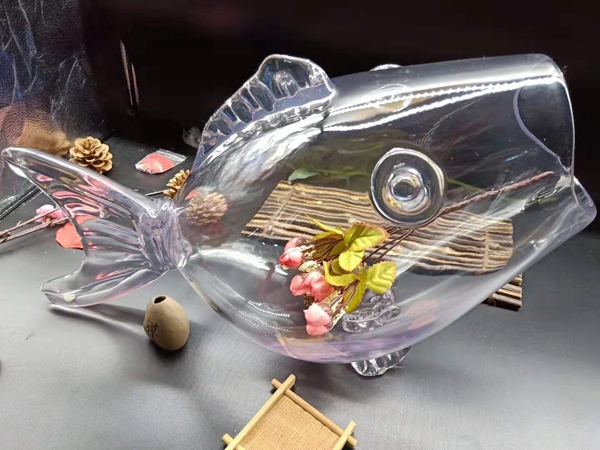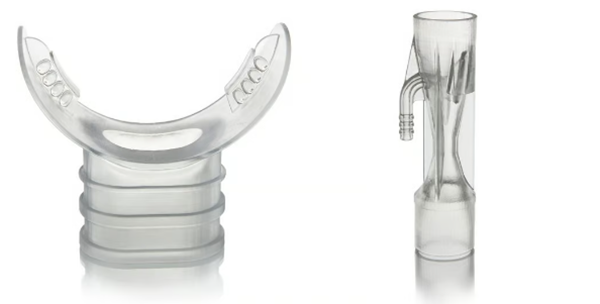From decorative statues to microfluidic research, transparency is3DVery useful functionality in printing. Product designers need clear, transparent bottle prototypes, dentists value clarity3DPrintable surgical guide, transparentAlsoYes3DImportant features for printing lamps, architectural models and glasses.

Magic Monkey 3D printing transparent resin
Seamless 3D printing technology offers exciting business and engineering opportunities. Dutch startupsLuxexcelProduction3DPrint corrective lenses, simplyFacebookparent companyMetaacquisition. The company prints everything from standard lenses to integrated smart technology andAR/VRVarious goals for technology. The automobile manufacturer Chrysler uses transparent3DPrinting technology for testing lubricating oil flow and efficiency in various axle differential housings.
Today Mohou.com shares with you this guide to learn more about transparency3DPrinting Methods, Techniques and Best Clear Resin Materials to Get a Crystal Clear Print3DPrint parts.
3DTransparent resin printing process:YEARSAndFDM

3DPrint a transparent lampshade (source:Cults3D)
There are many types of translucent materials available3DPrint. Here we highlight the growing number of truly transparent (i.e. completely transparent) materials. First, we will address transparency3DThe main printing method (YEARSAndFDM), then describes best practices for achieving high-quality results. Finally, we will provide a transparent overview3DPrinted list of filaments and resins.
Although you will find a lot of advice in this article, for many3DFor printers, flawless transparent parts may be out of reach. Rather than printing the parts yourself,Not as good asturn towards3DPrinting services, e.g.Mohou.com can provide industrial grade productsSLA3DClear resin print, currently available600And800mmThe device prints.
Now let’s talk about clear and transparent printing3DMethods available for parts.
3Dprinting technology

used forNexa3DTransparent resin for transparent parts (Source:Nexa3D)
Resin-based printing is the obvious choice for transparent parts, as layer lines are much less visible than with filament-based methods. There are several resin techniques that use clear resin. Clear resins will produce clear parts when cured under UV light, but to get the clearest prints there are a few tricks, such as100%Printing at higher infill densities, although requiring longer print times, can produce crystal clear parts and even functional camera lenses.
1cylinderAggregation is a3DA printing process where you get transparent parts using a UV-cured transparent resin in a vat. These methods include the most common and affordable stereolithography(YEARS)slightly faster digital light processing(DLP)and mask stereolithography(MSLA)。
Magic Monkey 3D printing transparent resin
2、Material jetting is another resin-based method in which UV-curable resin is dropped onto a surface and instantly cured with UV light.PolyjetYes3Dprinter manufacturerStratasysMaterial projection method developed. To usePolyjetTo get clear prints, you must first use a transparent resin such asStratasysofVeroClair). For best results,PolyjetParts often need to be finished using varnishing, polishing or photobleaching processes.3Dprinter manufacturerMimakiThe proprietary technology is also a type of material jetting. It uses inkjet printing technology to combine white, transparent andCMYKFormattedUVThe cured liquid resin is deposited layer by layer onto the bed, with a soluble support material. Each layer is UV cured.
3、FDMallows you to use transparentThreadand almost anyFDMPrinter to implement transparent parts. This process leaves visible ridges at the edges of the finished part, but with post-processing and a few tips that we detail below, they can be removed.
3DTips for printing transparent materials
ForYEARStransparent3DPrint for the best with complete transparencyPathMostly occurs in post-processing.There is also okAdd a little blue dye to the clear resin to counteract the UV yellowing process.—Although this may result in the impressionPrint transparency is not a solid color。
Magic Monkey 3D printing transparent resin
Use material extrusion orFDMWhen printing, there are steps you can take to improve print quality. For example, you should use a higher hot end temperature, a larger layer height, and a lower fill level. These steps will ensure the clear material is properly melted, spaced, and hollow enough for optimal clarity.
Also think about your configuration: you must be perpendicular toZaxis,XYFlat transparency or total transparency? To make a transparent vase, you will probably only needXAxis andYesThe transparency of the axis (through it). To make a flat window, you just needZThe transparency of the axis. To be fully transparent, you need all axes to be transparent.
To achieveXAxis andYesStem transparency requires a significant layer height relative to the size of the nozzle used. Larger, more spherical layers tend to refract less light, resulting in greater transparency.3DPrint parts. According to the material manufacturerTaulman3Din terms of nozzle diameter70%has90%Printing will produce a more transparent print.
The following settings are recommended to increase transparency using this technique:
The printing speed becomes slower (normal printing speed25% to 30%)
Use a larger nozzle to print thicker layers
In terms of nozzle diameter70% to 90%Print to obtain structures that refract less light
Use the highest nozzle temperature within the filament range (ensuring plastic melts)
Use higher than100%flow (in this case108%)
Turn off fan or print cooling
Post-processing:
1fine polishing
Sanding clear resin parts in water removes surface scratches, layer lines and imperfections (Photo:Christopher Daniels)
for the most part3DPrinting requires post-processing to achieve the desired results. transparentPrintNo exceptions. In fact, the essence of transparency lies inPost-processingaccomplished.
althoughYEARSIt is possible to produce truly stunning clear pieces, but a major problem with this method is yellowing over time. The surface will also become dull. There are several steps to mitigate these effects.
First, the parts need to be cleaned. This is usually done with isopropyl alcohol. They are then cured under UV light.
Avoid over-hardening to avoid yellowing. Finally, the parts should be sanded, polished, and coated with a clear coat or varnish.
For best results, sanding should begin with400Starting from the element, gradually increasing until12.00At this point the room will become reflective. After sanding and polishing, spraying a clear coat creates a beautiful finish and prevents yellowing caused by UV exposure. Parts can also be dipped in resin to get a really smooth surface (although this is not ideal for lenses).
2、photobleaching
Another post-processing method is called photobleaching. This method requires additional machines, e.g.StratasysmadeProBleacher。
when it comes toFDMWhen printing, sanding and a clear coat, such as this polyurethane spray coating, is often recommended. filament based3DPrinted parts can be treated with solvents. For example,PolySmoothlongSilk is specially designed for transparent modelslongSilk.PolySmoothThis can be done with ethanol, which is sprayed onto the print and allowed to dry for a few days. Reapply several times to make the piece transparent. However, the part can lose its dimensional stability due to solvents.
Please note that solvents cannot be used with allFDMPrint,For exampleexistABSUsing solvents on parts may cause damage.asofdefaultsurface.
Daguang focuses on providing solutions such as precision CNC machining services (3-axis, 4-axis, 5-axis machining), CNC milling, 3D printing and rapid prototyping services.













































